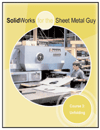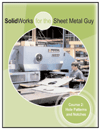The other day, a colleague of mine mentioned to me that she was taking on a project where others in her company were not happy. She was going to challenge the HVAC design of another consulting firm (also a competitor of their company) that may have made mistakes on this particular project. The concern of her partners was that this could reflect badly on their firm and thus influence the future of the company based on her decision to do the right thing for a building owner in need of a solution.
I told her that this was not an uncommon problem and was not limited to just the HVAC community. There are boards overseeing professional ethics that have made their own mistakes and who can be investigated by a third party for someone unjustly accused, and it doesn’t stop there. There can be professional society boards that can be called into question based on their own actions. I have experienced firsthand competing consulting engineering firms being hired by a building owner to provide a third-party peer review of an HVAC design, which can be a good investment for the owner, but often these reviews can result in a second agenda by the reviewing firm to not only provide good technical advice but to also make the original design firm look not so good in the eyes of the client. It is always a fine line between doing the right thing and maybe making the competition look bad in the process (a topic for another day).
BETTER REPUTATION, BETTER BUSINESS
Getting back to the discussion at hand, I told my friend that as a professional, as well as a good human being, you need to always strive to apply yourself in a way so that eventually others learn from/of your knowledge, integrity, and fairness either firsthand or by word-of-mouth reputation. This doesn’t mean you go around thinking you are always right and others are wrong. It means that based on your morals and ethics, you can be counted on to assist in problemsolving and/or raising awareness to a potential injustice (e.g., errors and omission charges) without compromise. Even giving a somewhat wrong suggestion can trigger the right answer when working as a group troubleshooting an HVAC problem, and remember that problemsolving is always 20/20 hindsight and something the original engineer didn’t have at the onset of the project.
When it comes to problemsolving and doing the right thing relative to providing answers to the questions, an engineer needs to look first for a reasonable solution to the problem and not worry about how the answer(s) will affect the original designer. The problemsolver has been hired to find and recommend solutions, and has not been hired to solve a problem(s) while protecting the original designer, associated builder, and/or the building maintenance group. Having said this, it is important to note that the HVAC designer may have not been the root cause of the problem, and quite often it can be any combination of deficiencies: equipment, installation, startup, operation, and/or maintenance. A good solution will usually ferret out how the problem evolved, and that follow-up question — “Who is at fault?” — will probably be more obvious to identify.
I summed up our conversation by saying that by taking on this problematic challenge, she could inherently be establishing a new service for the firm’s clients and potential future clients. By making an honest effort to contributing to reasonable solutions, my friend could let her actions speak for themselves by doing the right thing and providing answers to a building owner on a project that did not meet his expectations. With this honest effort and letting your actions and results speak for themselves, you don’t need to worry about what others think of you. Your reputation as a professional and someone who cares is an integral building block for anyone wanting to be recognized in a good way in this business, but it is something you can’t convince anyone by simply telling them how smart you are. Doing the right things and doing it without a lot of fanfare on a project by project basis will quiet the critics.









